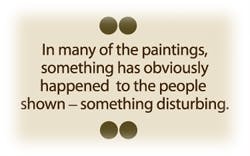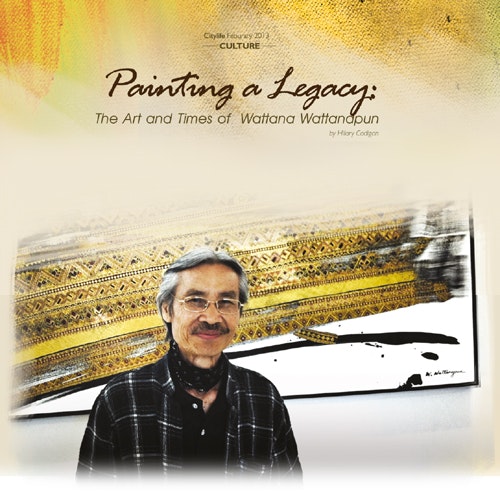Growing up in a remote village of rice farmers just south of Bangkok, Wattana Wattanapun was always interested in art.
“I drew everywhere I could – on sand, on dirt – and I was always making shadow puppets out of cut up leaves,” he told me. “In school, I wasn’t very good at other subjects, except for art. I loved it.”
He still does. After spending most of his adult life moving back and forth from Thailand to America, studying, teaching, and producing over a thousand works of art to both critical and commercial acclaim, Wattana is finally back in Chiang Mai for good. To prove it, he has co-designed and built his own gallery, right next to his home in a leafy area just down the road from Wat Umong. The Wattana Art Gallery opened on 20th December 2012.
“I have no children and no family,” the twice-divorced artist explained, “and I’m not young. I had so much art just lying around, getting mouldy. It needed a house, a place where people can come see it even after I’m gone.”
The gallery itself is a charming piece of architecture, clearly designed with an artist’s eye. The walls lean at an almost imperceptible 15 degree angle, and many of the windows are cut diagonally, giving the entire space a feeling of motion, of controlled chaos. Secret panels swing out to reveal additional artwork, and provide the option of partitioning off certain sections of the gallery. Currently open to the public by appointment only, Wattana hopes to use the space as a means of contributing to the Chiang Mai community, hosting rotating shows, performances, workshops and art education for local student groups.

As we walked around the bright and airy gallery, Wattana pointed out pieces from his most recent series of paintings, a strikingly beautiful collection titled ‘Grace and Malice’. Focusing on textile as a cultural and social text, the work subtly illuminates the endless strife of minority ethnic groups living in the mountains of Southeast Asia.
“In these paintings, the grace of the mountain people is represented by their textiles and traditional dress,” Wattana wrote in his official statement about the series. “In many of the paintings, something has obviously happened to the people shown -something disturbing. They don’t seem to be in control of their lives. Indeed, the only visible remnant of their previous existence is the cloth they are wearing.”
The meticulous techniques that Wattana uses to create his hyper-realistic fabric effects are particularly impressive, and he says it is his attention to technique in general that makes his art stand apart from others. That, and hard work.
“For this series, I layered fast, rough brush strokes under slow, disciplined patterning,” he told me, highlighting the palpable tension of opposites found in much of his work. “People think its actual fabric pasted on, but really it’s all just acrylic paint!”
The ornately painted ‘fabrics’ featured in Wattana’s work are often wrapped around the bodies of women, meant to represent the powerless, voiceless weavers of the world-renowned textiles that the Thai government so often uses to promote tourism. Very little credit, both monetary and otherwise, is ever given to these women, and Wattana hopes to raise questions about these injustices and inequalities through his art.
“I did a recent presentation of some of my work in Malaysia,” Wattana recalled, pausing at a particularly arresting image of a half-nude woman lying facedown on a bed. “There were quite a few Muslim women in the audience, and some of them began walking out upon seeing my art, presumably because of the naked women in many of my paintings. But luckily, during the question and answer session, a woman raised her hand and said, ‘I noticed you use a lot of women in your work. Why?’ I thanked her; I was so happy she asked, that she didn’t just walk out. Then
I answered her question with another question: ‘Who weaves the textiles?’ They all started nodding. They knew. Men don’t do it. It’s the women.”
